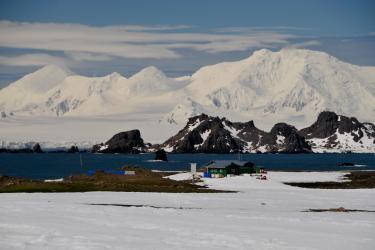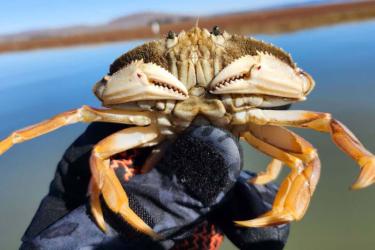Ten adult white abalone produced and fertilized 25 million eggs, well over previous production, which quickly overran UC Davis’s Bodega Marine Laboratory. The spawn was so successful that when the eggs hatched two days later, the team shipped millions of tiny larvae to partner institutions throughout Southern California. Among these shipments, the research aquarium at the Southwest Fisheries Science Center in La Jolla, CA, received 4.8 million larvae over the course of two deliveries. The staff spent the following week conditioning these newly hatched larvae for settlement to the bottom of tanks that will be their home for the next one to two years.
What This Means for Recovery Efforts
White Abalone, Haliotis sorenseni, was listed as an endangered species in 2001 after decades of overfishing and ecological changes to its native habitat along the California Coast. Despite protection, populations of white abalone continue to decline. While individuals still reside in the wild, their spawning requirements, coupled with their extremely low population size, puts them at a high risk of extinction without captive propagation programs to support them. Abalone release their eggs and sperm into the water where they must meet in order to fertilize the eggs.
This means that males and females must be in close proximity for successful fertilization. These fertilized eggs are suspended in the water column where they hatch into larvae before “settling” on to the surface of rocks, or, in the case of captive animals, on the walls of aquaria.
In 2010, NOAA Fisheries teamed up with UC Davis’ Bodega Marine Laboratory and the California Department of Fish and Wildlife to restart the White Abalone Captive Breeding Program, which spawns and raises abalone in a research aquarium for eventual outplanting to supplement the wild population. This program had its first captive spawning success in 2012, and has been successfully spawning abalone since that time. The success of this most recent spawning event is unprecedented; the next closest event was in 2016, which produced 11 million fertilized eggs.
Setting up Shop
Biologists at the Southwest Fisheries Science Center spent the week retrofitting tanks to increase space for the 4 million larvae, compared to their previous set up for fewer than 1 million. The day after the larval delivery, Southwest Fisheries Science Center biologists and others from federal and state agencies induced settlement of the white abalone larvae in the research aquarium using a combination of diatoms and GABA (gamma-Aminobutyric acid). This process helped prompt the larvae to affix themselves to the substrate.
The facilities at Southwest Fisheries Science Center provide high purity, temperature-controlled seawater to a variety of settlement and growout systems. These systems include three sets of half pipe arrays filled with ceramic or acrylic tiles, as well as five large trough-style tanks outfitted with multiple sheets of corrugated plastic panels to increase surface area for the abalone. Adjustable LED lighting helps grow benthic diatoms (Navicula spp.) that the young abalone will feed on for the first three to six months before transitioning to cultured macroalgal diets (Palmaria mollis and Ulva latuca).
Looking Toward the Future
Program scientists are celebrating this spawn as a step forward in the recovery effort. This event is particularly important to the program because three newly collected wild white abalone and their progeny will dramatically increase the genetic diversity of the breeding program.
The newly settled abalone larvae will grow in the Southwest Fisheries Science Center research aquarium. Despite the high quality conditions, only a fraction are expected to make it to adulthood due to natural mortality. Once the adult abalone are stable enough for outplanting, researchers will introduce a subset of them into the wild. The remaining abalone will remain in the research aquarium and become part of the Captive Breeding Program broodstock.

